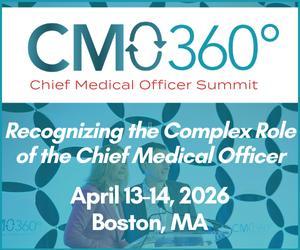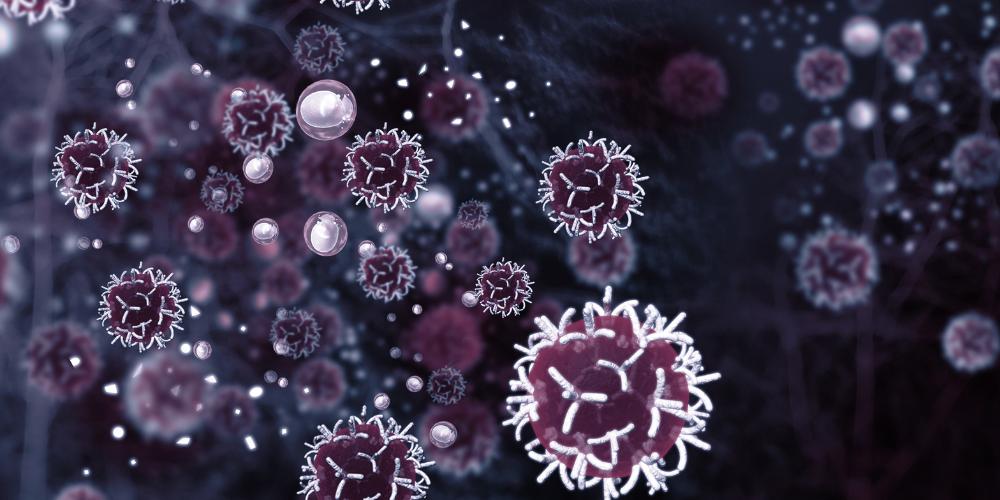Takeda’s Approach to Translational Medicine in Immuno-Oncology
Christine Ward, PhD, gets into how she is building a translational medicine function at Takeda, and the necessity of a translational mindset for IO. Dr Ward is VP, head of Oncology and Cell Therapy Precision and Translational Medicine at Takeda.

What is the work you’re leading at Takeda?
Right now, we’re in the middle of building a precision and translational medicine organization for both oncology and cell therapy. I joined Takeda about a year ago; before that, the translational capabilities were very dispersed across the organization. And given the importance of precision and translational medicine to oncology, we needed to build a function to do this.
It’s basically a one-stop shop for everything translational in my organization, from the people that come up with the early translational strategies; to the colleagues that make and work in our clinical trials to implement the translational strategies, to really understand which patients are responding and how our drugs are working; to the group that does companion diagnostics. We’re building a team to do a lot of the assays and to help with the outsourcing of the assays. It’s a new model for Takeda. It existed in different parts around Takeda. But given the speed that oncology moves, we felt it was important to pull it all together in one organization.
"The new model that most companies have embraced is taking a translational mindset. And to me, that is taking data from patients, very early on, to inform decisions."
What is the focus of Takeda in regards to oncology and immunotherapy?
Our North Star for oncology is that we aspire to cure cancer. So it’s a vision; obviously we have a ways to go to get there. But it trickles down into our mission to bring our treatments to patients as quickly as possible, and with as much data as possible, so that physicians can make informed treatment decisions for our patients.
The team that I’m building here at Takeda is really going to be central to that, because cancer drug development moves very quickly. You’re able to pivot and accelerate development programs based on understanding response in certain populations. So it’s really an important and integral part of what we do.
We have molecules in the proteasome inhibitor space; we have molecules that target specific mutations in lung cancer, so mobocertinib and brigatinib. Brigatinib targets ALK. And then over the past couple of years, we’ve really made a conscious effort to go down that immuno-oncology space. We have a number of programs that target the interferon pathway, as well as cell therapy now. We have an exciting collaboration with MD Anderson around CAR NKs that we’re very, very excited about.
From the Precision and Translational Medicine hub, how do you prioritize such a broad pipeline and develop a working team?
The good news is, the organization recognizes that this is a core area that needs to be resourced. So we’re building the right team now. And secondly, we prioritize our pipeline very, very efficiently. Obviously, we have programs that are very exciting. They’re prioritized for various reasons, based on where they are in the potential launch map, as well as the data that’s been generated. Our team is very, very keenly aware of what the priorities are.
Can you describe Takeda’s approaches to immunotherapy, turning tumors cold-to-hot and redirected immunity, in its pipeline?
With redirected immunity, we consider cell therapy and T cell engagers as parts of that bucket. That’s really our cell therapy/T cell engagers pipeline. It’s a little bit earlier, so we still need to see what the potential is in the clinic. And then for what we call cold/hot, it’s about turning cold tumors warm. That’s where we have a lot of the interferon programs; we have a program called TAK-573, which is an exciting attenukine that delivers interferon into CD38-positive cells. That is very exciting. We have a STING agonist, also in this interferon space, as well as other programs. We think about it very mechanistically. But the two development paths are intertwined in terms of moving as quickly as possible, but the redirected immunity is a little earlier in the pipeline.
"The best partnerships internally at a drug company are where the translational scientists and the clinical development/clinical science team are partnering, integrated in this same mindset.”
Why is it crucial to have an in-house translational capability?
Translational is an indispensable part of oncology drug development. There are numerous examples of many companies taking the quick all-comers approach, where you just move your molecule as fast as possible. You dose the highest dose you can get in your Phase I study, see where it works, and then all of a sudden, go fast and do a Phase III and then sometimes it doesn’t work.
The new way of doing this, the new model that most companies have embraced, is really taking a translational mindset. And to me, that is taking data from patients, very early on, to inform decisions.
That means you’re studying your target pathway in patients to understand which disease indications your drug might work best in. That means the way you run your Phase I one studies that you’re not just making decisions about your drug just based on safety, and early efficacy, but you’re looking at that pharmacodynamic relationship and the PK/PD relationship. It takes an incredibly strong partnership with clinical development. And in my experience, the best partnerships internally at a drug company are where the translational scientists and the clinical development/clinical science team are partnering, integrated in this same mindset, to bring the drugs as quickly as possible, but to study it very robustly while in the clinic.
It’s like a dance, and we have to make tradeoffs all the time. And sometimes you can’t do the things that you want to do, because they’re just not feasible and you’d never be able to recruit a study. And so we make those decisions together, between the translational and clinical team. And we’re also pushing innovation, because we are embracing those new technologies that may not be officially approved as a diagnostic yet, but have a lot of promise. We do work with the best partners to put the highest quality assays into our clinical trials.
What do you see as the biggest hurdle in getting a stronger response to immunotherapy and precision medicine?
There are a couple of barriers. When I was discussing our pipeline: we have molecules that target EGFR Exon 20. It’s a very specific mutation. And either you have it or you don’t. There are different flavors of it, but we know how to look for them, especially now that we can do sequencing and see different levels of mutations.
You can see different levels of the mutations, and not just the one point mutation. You can look at the whole gene and sequence it. The challenge with IO is that some of these biomarkers are what we call “continuous variables.” Rather than, “I have the mutation, I’m going to respond,” and “If I don’t have the mutation, I won’t respond,” it’s a continuum. As the marker of interest increases, you tend to see this increase in response. But how do you define that cutoff, because it’s not a binary readout?
That’s a challenge, particularly with immuno-oncology. And if you look to the PD-1 space, you’ll see this with the PD-L1 story. You see it with tumor mutational burden as a biomarker. That was studied for a while and seemed to have some promise. It was the same thing: how do you define the cutoff to balance those that are responding and not responding? That’s a challenge.
To hear Dr Ward speak on activating the interferon pathway, click here.
For more information on IO360º, click here.









